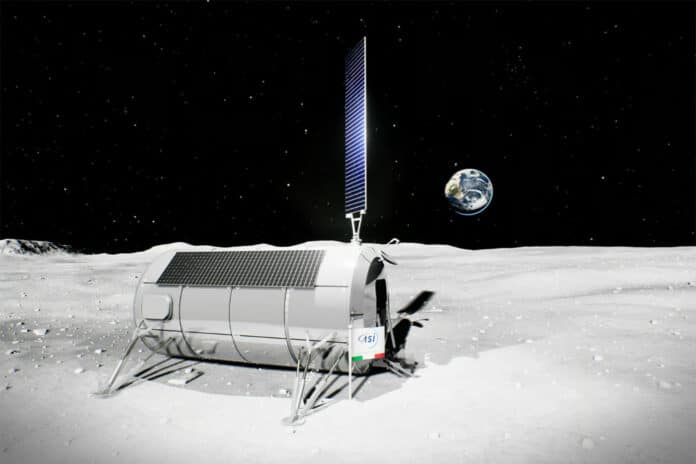NASA, in collaboration with France’s Thales Alenia Space and the Italian Space Agency (ASI), is taking steps to establish a permanent base on the Moon as part of its Artemis mission. The historic collaboration will develop the Multi-Purpose Habitat (MPH), a crucial component of the Artemis program. This lunar habitation module aims to be “the first permanent outpost on the Moon.”
This partnership reaffirms Italy’s central role in crewed and robotic space exploration on the Moon and in deep space. Furthermore, the collaboration strengthens the company’s leadership position in lunar exploration as their teams are working on the development of three pressurized modules dedicated to Lunar Gateway: ESPRIT and I-HAB for ESA and HALO for Northrop Grumman.
The idea of a lunar base has always been a popular theme in sci-fi movies and TV shows. But NASA is now closer than ever to making this a reality. The Multi-Purpose Habitation Module (MPH) is being developed to support long-term human presence on the moon, allowing astronauts to conduct scientific experiments, test new technologies, and explore potential risks.
Since 2020, Thales Alenia Space and ASI have been working with NASA on this ambitious project. They have successfully passed NASA’s Element Initiation Review, with Thales Alenia Space taking on the responsibility of further developing the lunar base. Their technical and organizational capabilities have been instrumental in overcoming the challenges associated with this project.
As of now, the multi-purpose habitat remains a mere concept. However, the design was granted approval by NASA‘s Element Initiation Review in mid-October and is expected to undergo a Mission Concept Review (MCR) early next year. Before the actual habitat can be created, the company needs to work with various firms to establish the intricate infrastructure and supply chains that are required to create the actual habitat.
The concept that has been revealed in renders appears to be quite simple – a metallic cylinder perched on articulated legs with solar panels, a communications dish, and an ASI flag. Nonetheless, the MPH must be more than a luxurious camping cabin that comes equipped with an airlock. When the MPH is operational, it will protect its inhabitants from intense cosmic radiation and extreme temperatures on the lunar surface. Additionally, the MPH will have a life support system that can provide air, water, and stable, livable temperatures for beyond a few days. Not much about the project has been revealed yet.
The project’s next crucial challenge will be to complete the Mission Concept Review (MCR), expected in the first quarter of 2024. The review will move the project forward to the next phases of critical technology design and development of the module.
In this initial phase, Thales Alenia Space will be tasked with coordinating an industrial consortium of large, small, and medium-sized companies from the national supply chain to advance the program to its implementation phase. Through module design activities and future collaboration on Italian technological and production capabilities within the Italian ecosystem, the primary objective remains to deliver a secure, comfortable, and multifunctional habitation module for astronauts, able to interface with other systems and components in the Artemis architecture.
“MPH will mark a historic milestone as the first Italian habitation module to operate on the lunar surface. This is a matter of great pride for our company, which has the unique technical and organizational skills to overcome challenges of this kind,” commented Franco Fenoglio, Head of human planetary exploration and robotics programs at Thales Alenia Space.
